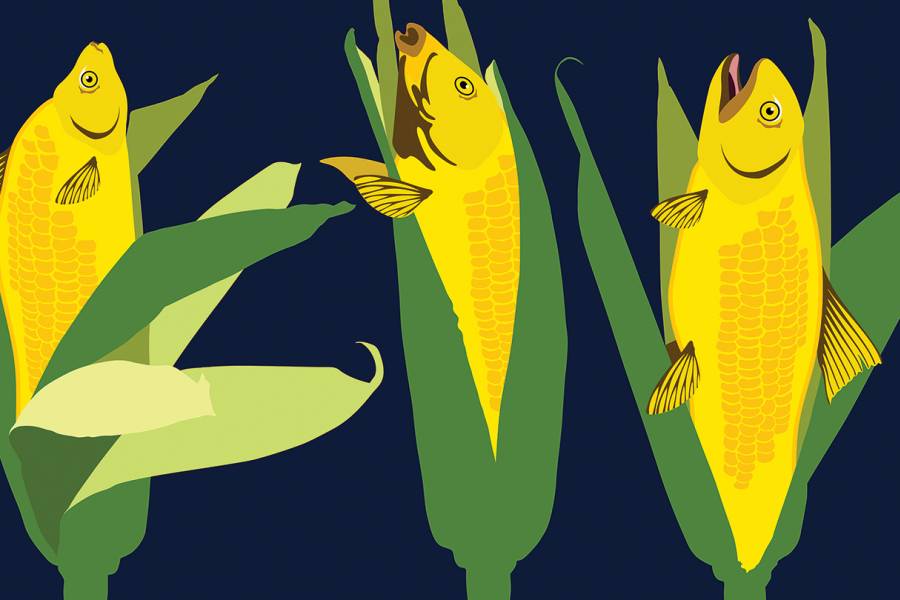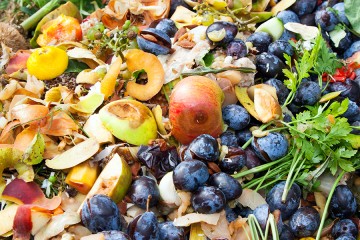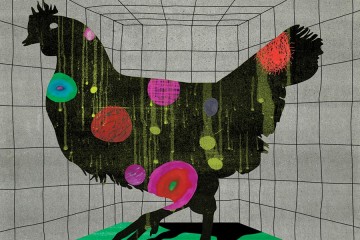Three miles off the coast of Norway, some 1.5 million salmon are swimming in a semi-submersible, football-field-wide structure fittingly dubbed Ocean Farm 1. Owned and operated by farmed salmon giant SalMar, Ocean Farm 1 is the world's first deep-sea aquaculture project. If all goes according to plan, the farm's first generation of salmon will be harvested later this year, proving that it's possible to establish fish farming anywhere in the open sea.
Similar structures not far off America's coastlines could soon be a reality. In June, a bill was introduced in the U.S. Senate to streamline permit approval for deep-sea farming in federal waters of finfish, such as Atlantic salmon, yellowtail tuna, and sea bass. Upon hearing the news, Jillian Fry, director of the Johns Hopkins Center for a Livable Future's Seafood, Public Health, and Food Systems Project, jetted down to the nation's capital to learn more and offer some perspective on the bill. Fry is one of few national experts on all things aquaculture—the farming of fresh and marine life including plants, mollusks, crustaceans, and fish—and as it's becoming big business, her expertise is increasingly sought out.
"I expressed concerns with Senate staffers that if they're going to develop this industry, much better oversight, reporting requirements, and transparency is needed to keep a close eye on operations. Out there, who will know what's going on?" Fry says. "We have had environmental and public health issues with land-based animal farming, such as degradation of water and air, and we don't want to repeat our mistakes when it comes to aquaculture."
Fry, SPH '12 (PhD), is by no means against farmed fish. Aquaculture, she says, can be nutritious, safe, and sustainable, and it has the potential to feed millions. In August 2017, researchers at the University of California, Santa Barbara, published findings that an area of the ocean roughly the size of Lake Michigan could produce 100 million metric tons of fish and shellfish annually if devoted to aquaculture. That's nearly equal to the current output of wild-caught seafood. Whether or not this would be good for the planet remains in question.
"The aquaculture industry is in flux and changing rapidly," Fry says. "Aquaculture, considering the number of species and numerous production methods, is as complex as all of agriculture. Consumers should be assured that farmed seafood is as environmentally safe and healthy as possible. Some are doing a fantastic job, but others are not."
Aquaculture takes many shapes—deep sea, man-made pond farms, floating net pens along the coast, coastal shellfish rack systems, and indoor pond systems that recirculate 99 percent of the tank water. Some practices can lead to public health risks due to the overuse of chemicals and antibiotics to keep the fish healthy, which can lead to antibiotic resistant pathogens or drug residues in the fish.
Video credit: Motherboard
The physical structures associated with fish farming are not without fault. The fish are often tightly packed into netted mesh pens floating in open water, allowing disease to spread quickly. "Disease transfer can actually go both ways, wild to farmed and vice versa, but there is evidence that farmed fish can serve as an amplifier of the diseases that affect wild fish," she says. Wild marine fish and mammals can become tangled in a farm's nets and cages, and farmed fish can escape into the wild. In August 2017, a coastal net pen near Cypress Island in Washington collapsed and released an estimated 300,000 non-native Atlantic salmon into the surrounding waters. While many have been recovered, almost a third of the fish remain unaccounted for and have the potential to displace or spread disease to native fish species. Even indoor recirculating systems, often considered a more ecologically responsible technique because they have no chance of contact with wild stocks, are problematic because of the amount of energy they require to run.
There are also occupational hazards associated with the industry, including the inherent dangers of working in open water and exposure to drugs and chemicals used in fish health management.
All told, there's a lingering question of whether farmed fish is better or worse than its wild counterpart. On that front, Fry's latest research looks into the quality of fish feed used in aquaculture. Traditionally, farmed fish have been fed a diet of foraged fish—sardines and anchovies—but as the industry expands and demand increases, producers are looking to develop cheaper, more efficient crop-based feed resembling pellets. But that means less fish oil in the feed, and subsequently lower levels of the "good" fats like omega-3 fatty acids in the fish, diminishing a main health benefit of eating it in the first place. Some companies have fish oil added, and some are working on alternatives such as algae-based feed. She recently published in Environmental Research Letters that fish and crustaceans are generally better than livestock at converting food into body weight but don't necessarily offer a greater protein bounty. Atlantic salmon, however, is on par with chicken, the most efficient animal protein producer.
So, are more mega–fish farms coming to U.S. coastal or open waters? First things first, Fry says. She and her colleagues call for more research and safeguards before permitting more coastal and open-water aquaculture pens. There needs to be a certification process for aquaculture facilities, setting minimum requirements, she says. "State and federal agencies need to coordinate, devote more resources," she says, "and adopt a precautionary approach with proper oversight over this emerging industry."
Posted in Health, Science+Technology
Tagged food, center for a livable future, aquaculture, food production










